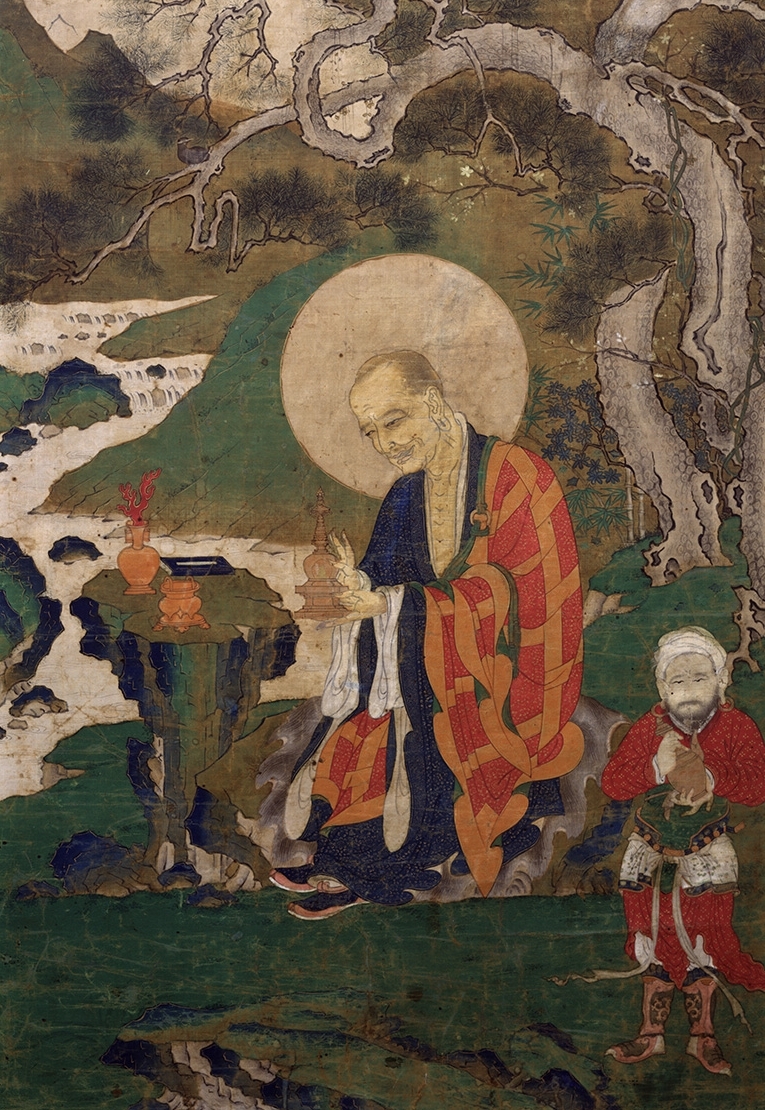
Abheda is one of the sixteen arhats, the original disciples of the Buddha. His identifying attribute is a stupa, which he holds in both hands. Typically the arhats are depicted as a group, so this painting is likely part of a larger set of up to twenty-three paintings.
The arhat genre was imported from China, and this painting exemplifies the deftness with which Tibetan artists were able to emulate Chinese painting techniques and the depiction of Chinese material culture. Especially impressive is the use of ink, from the sensitive delineation of the arhat’s face and sunken chest to the subtle, textile-like pattern in the texture of the tree bark behind him. Chinese objects depicted include a bound book and bronze incense brazier on the rock to Abheda’s right, while the stupa, delicately picked out in gold, is Tibetan in form. The winding stream in the landscape is a visual device used to suggest receding space.
32 x 20 in.
F1996.4.1, HAR409
- https://dev.rubinmuseum.org/images/content/802/f1996.4.1har409__zoom.jpg
- https://dev.rubinmuseum.org/images/content/802/f1996.4.1har409__zoom.jpg

